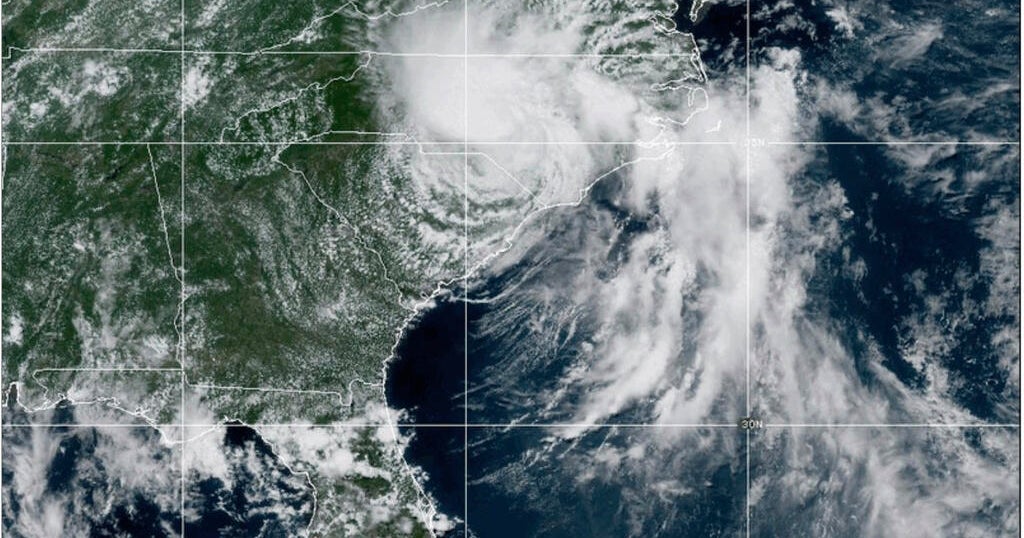Median sale prices doubled or more in these 24 NYC neighborhoods: report
Dozens of forgotten NYC neighborhoods have become real estate hot spots, with home prices doubling — or more — over the past decade, a new report revealed.
Two Bridges, nestled between the Brooklyn and Manhattan bridges, saw the biggest price boom, with median home sales skyrocketing 288% from $423,000 in 2014 to more than $1.6 million in 2024, according to PropertyShark.
The whopping growth is from high-end real estate developments like One Manhattan Square, a waterfront skyscraper at 225 Cherry St. where a penthouse rents for a mind-boggling $45,000 per month, according to the report’s author, Eliza Theiss.
“Major high-end projects like this rapidly transformed the area,” Theiss told The Post. “Community resistance was overwhelmed by luxury expansion.”
Neighborhoods with the next steepest price climbs are on peninsulas — including Queens’ Breezy Point and Hamilton Beach, and Brooklyn’s Red Hook and Gerritsen Beach.
Breezy Point, an enclave which sits on the western end of the Rockaway peninsula, saw median sale prices grow 192% in the last decade, from $248,000 in 2014 to $725,000 in 2024.
Hamilton Beach, on a strip of land north of Jamaica Bay, saw prices surge 172% from $170,000 in 2014 to $462,000 in 2024.
These waterfront areas took a hit when Hurricane Sandy landed in 2012, wreaking havoc on real estate and environmental protection infrastructure, according to Theiss.
But the implementation of flood mitigation and other environmental protection measures in the areas saw wealthy real estate investors notice the opportunity, and they swooped in, she said.
“Disaster recovery efforts raised the neighborhoods’ safety and appeal,” she explained.
And when the pandemic hit in 2020, the shift to remote work trends opened up the demand for less transit-accessible, waterfront areas, Theiss noted.
Red Hook, a southern Brooklyn community that reaches into the Upper New York Bay, also saw a 150% increase in its median home sale prices, from $790,000 10 years ago to an eye-popping $1.975 million last year.
Gentrification played a factor in Red Hook’s booming popularity, said Theiss, as well as that of Gerritsen Beach, located on a sliver of land between Gerritsen and Shell Bank creeks, where the median home sale price climbed 136%, up to $520,000 from $220,000 a decade ago.
And in Gerritsen Beach’s case, its neighbors – the popular Marine Park and Sheepshead Bay areas – helped to funnel interest in the coastal nabe, as a result of what Theiss called “a spillover effect.”
The impact is “increasingly polarizing,” she noted, adding “affordability is quickly vanishing.”
On the other hand, seven Big Apple neighborhoods – six of them in Manhattan – saw median home sale prices dip over the same timeframe.
Tudor City, an apartment complex that consumes the area between East 40th and 43rd streets and First and Second avenues, took the greatest hit, with prices falling 17% from $402,000 in 2014 to $335,000 last year.
Historical preservation restrictions, relatively small space offerings and its seclusion from the rest of Manhattan are just a few reasons why Tudor City’s popularity among investors have plummeted, Theiss noted.
Median sale prices in the ritzy SoHo have shrunk 6% since 2014, from $3.4 million to $3.2 million and, in Flatiron, they’ve decreased 6% from $1.54 million to $1.48 million. Condos in the posh areas cost more in 2024 than they did in 2014, while co-ops grew less expensive over the same period.
You may also like...
Diddy's Legal Troubles & Racketeering Trial

Music mogul Sean 'Diddy' Combs was acquitted of sex trafficking and racketeering charges but convicted on transportation...
Thomas Partey Faces Rape & Sexual Assault Charges

Former Arsenal midfielder Thomas Partey has been formally charged with multiple counts of rape and sexual assault by UK ...
Nigeria Universities Changes Admission Policies

JAMB has clarified its admission policies, rectifying a student's status, reiterating the necessity of its Central Admis...
Ghana's Economic Reforms & Gold Sector Initiatives

Ghana is undertaking a comprehensive economic overhaul with President John Dramani Mahama's 24-Hour Economy and Accelera...
WAFCON 2024 African Women's Football Tournament

The 2024 Women's Africa Cup of Nations opened with thrilling matches, seeing Nigeria's Super Falcons secure a dominant 3...
Emergence & Dynamics of Nigeria's ADC Coalition

A new opposition coalition, led by the African Democratic Congress (ADC), is emerging to challenge President Bola Ahmed ...
Demise of Olubadan of Ibadanland
Oba Owolabi Olakulehin, the 43rd Olubadan of Ibadanland, has died at 90, concluding a life of distinguished service in t...
Death of Nigerian Goalkeeping Legend Peter Rufai

Nigerian football mourns the death of legendary Super Eagles goalkeeper Peter Rufai, who passed away at 61. Known as 'Do...








